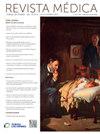成人蛔虫:急性复发胰腺炎的一种不寻常的病因。案例报告
IF 0.4
Q4 MEDICINE, GENERAL & INTERNAL
引用次数: 0
摘要
胆道囊肿是指胆管的一段囊性扩张。它们的发病率为10 -15万分之一,在女性中更为常见。20%在成年时被诊断出来,并可能使各种胰胆管疾病复杂化,包括复发性急性胰腺炎。如果不及时治疗,可能会导致成年期的严重并发症。本病例强调在病因不明的胰腺炎患者中需要考虑解剖学原因,以提高诊断和治疗。病例报告:一名69岁女性,既往有胆囊切除术史和两次非酒精性急性胰腺炎发作,表现为带状胃脘痛,伴有呕吐和腹胀。患者没有提及药物或酒精消耗。实验室参数显示高淀粉酶血症。磁共振胆管造影显示胆总管远端囊性扩张。在内窥镜逆行胆管造影(ERCP)下行括约肌切开术和胆总管切除,临床完全恢复。讨论与结论胆总管囊肿是一种罕见的成人病理,很难怀疑是复发性急性胰腺炎的主要原因。治疗取决于其分类,在这种情况下,ERCP是治疗的选择。这种方法可以解决并防止并发症的复发和潜在的恶性病变。本文章由计算机程序翻译,如有差异,请以英文原文为准。
COLEDOCOCELE en adulto mayor: una causa inusual de pancreatitis aguda a repetición. Reporte de caso
Introduction
Choledochal cysts refer to the cystic dilation of a segment of the bile duct. They have an incidence of 1 in 100,000-150,000 individuals, being more common in women. Twenty percent are diagnosed in adulthood and may complicate various pancreatobiliary diseases, including recurrent acute pancreatitis. If left untreated, it may lead to significant complications in adulthood. This case emphasizes the need to consider anatomical causes in patients with pancreatitis of unclear etiology in order to improve diagnosis and management.
Case Report
A 69-year-old woman with a history of previous cholecystectomy and two episodes of non-alcoholic acute pancreatitis, presented with epigastric pain radiating in band, associated with vomiting and abdominal distension. The patient did not refer drug or alcohol consumption. Laboratory parameters revealed hyperamylasemia. Magnetic resonance cholangiopancreatography indicated cystic dilation of the distal common bile duct. Endoscopic sphincterotomy and unroofing of the choledochocele were performed under endoscopic retrograde cholangiopancreatography (ERCP), with complete clinical recovery.
Discussion and Conclusion
Choledochocele is an uncommon pathology in adults and difficult to suspect as the primary cause of recurrent acute pancreatitis. Treatment depends on its classification, with ERCP being the treatment of choice in this case. This approach allows resolution and prevents recurrence of complications and potential malignancy of the lesion.
求助全文
通过发布文献求助,成功后即可免费获取论文全文。
去求助
来源期刊

Revista Medica Clinica Las Condes
MEDICINE, GENERAL & INTERNAL-
CiteScore
0.80
自引率
0.00%
发文量
65
审稿时长
81 days
 求助内容:
求助内容: 应助结果提醒方式:
应助结果提醒方式:


